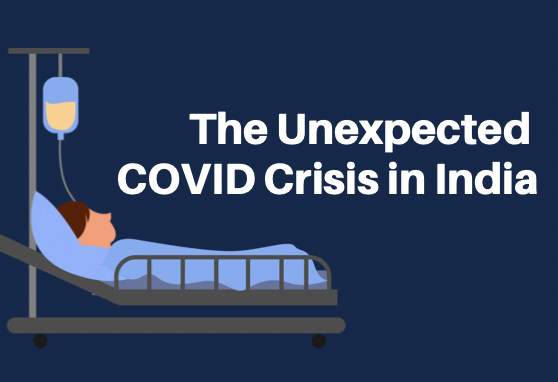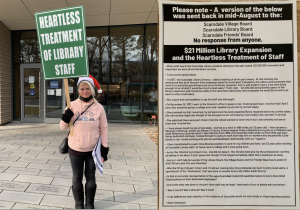The Unexpected COVID Crisis in India

India experiences new wave of COVID-19, prompting thousands to worry about the country’s current state.
May 12, 2021
Unlike the United States that experienced a high number of COVID-19 cases in January and early February 2021, cases in India were dropping to record low numbers below 10,000 per day. The growing possibility of herd immunity coming soon was supported by the fact that a little less than half of the people in several areas held antibodies. Even in the spring of 2020, according to John Hopkins Coronavirus Resource Center, India was reported to have lower death rates compared to many other countries, including the United States, the UK, and Italy. These observations might have been due to the larger percentage of younger people, and those who were older might have been more able to maintain safety precautions since they are often wealthier. Researchers have also suggested that those mainly being exposed to the virus during lockdown were poor urban workers who were less likely to react severely to the virus because they didn’t hold severity-linked characteristics like obesity.
Unexpectedly in March, a recent COVID crisis in India appeared and is causing grief and panic throughout the country, just as India was ready for the pandemic to be over. This new wave contains a new dominant variant called B.1.617, which scientists and researchers think to be the main cause of India’s second wave. The variant is currently classified as a triple-mutant and is more contagious in comparison to the previously discovered variants. Maria Van Kerkhove, the WHO’s technical lead for COVID-19, said that the vaccine should still be effective even though there is some evidence that the variant might be able to bypass some of the vaccine’s protection. She also said that this variant is “of concern at the global level” and that much more research is needed to understand the variant and its severity. Also according to WHO, as of Tuesday, around 9.5% of India’s total population has been vaccinated with at least one dose. Before this new wave, the lack of urgency to get vaccinated prevented vaccine rollout to be as quick as it could have been.
The number of new cases of COVID-19 per day has been rising. A health official in south Delhi stated that these numbers are more than three times what they were last year during their first wave. However, there may be discrepancies between the actual number of deaths and cases, and what is being reported to the government. For example, in just one day in mid-April, the media counted that nearly 700 bodies were cremated and buried, while the government’s official tally only presented a little more than a tenth of that number. This rocketing number of cases has been causing hospitals to run short of supplies and room, quickly becoming overwhelmed. Many patients have died due to a shortage of medical oxygen in several hospitals. “It is scary to see there is such a big difference between countries that are advanced in medicine and technology and those that aren’t. In the US, a lot of people are being vaccinated and restrictions are being lifted. But, in India there are so many people that do not have that opportunity and are suffering as a result,” remarked Emily Shirmonto ’22. “What is going on in India is devastating. It really goes to show how privilege we are in Scarsdale to do things like social distance and go to the hospital,” added Wubet Jean-Baptiste ’22.
High tensions and desperation for sufficient supplies are causing some conflicts between states in southern India after previously agreeing to share oxygen. Because of the new wave of coronavirus, prices for cremations have skyrocketed, leaving most unable to pay for a proper cremation for their loved ones. Fortunately, two of India’s largest cities, Mumbai and New Delhi, have seen slight improvement. In both cities, the number of positively tested people has been falling, and significantly fewer new infections are being reported. There is still little space in hospitals, but some are opening up again to take in more patients.
India’s variant B.1.617 has already been found in patients in many other countries, including the United States. Though it does feel as if COVID-19 is slowly going away, it is still extremely important that we continue to follow COVID-19 safety precautions and measures to slow the spread of the virus.

























